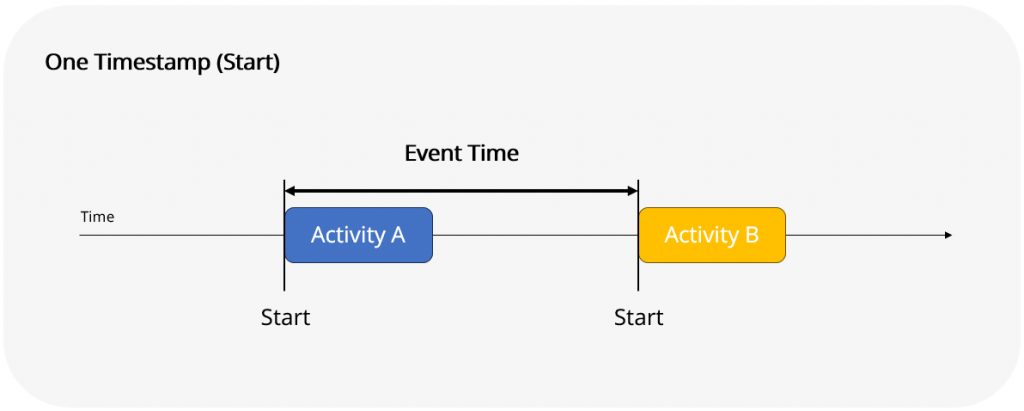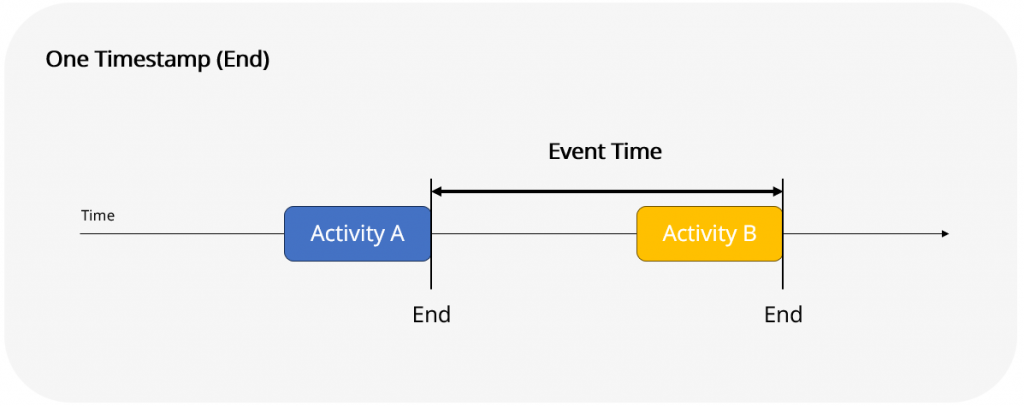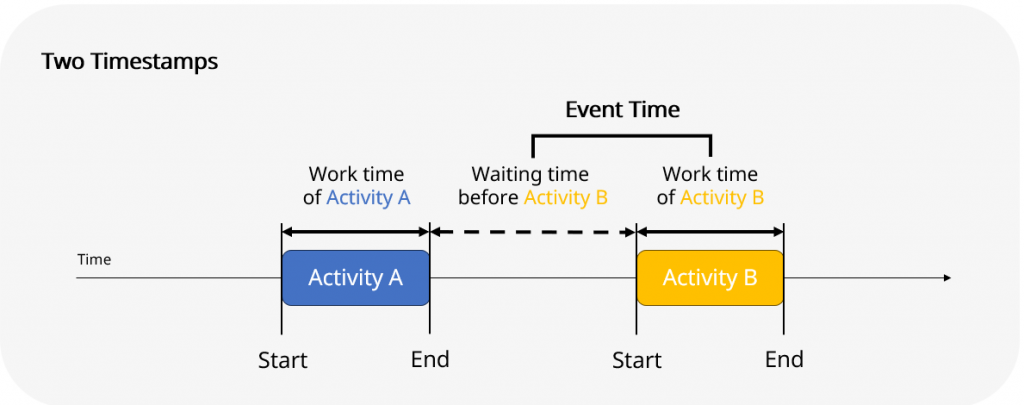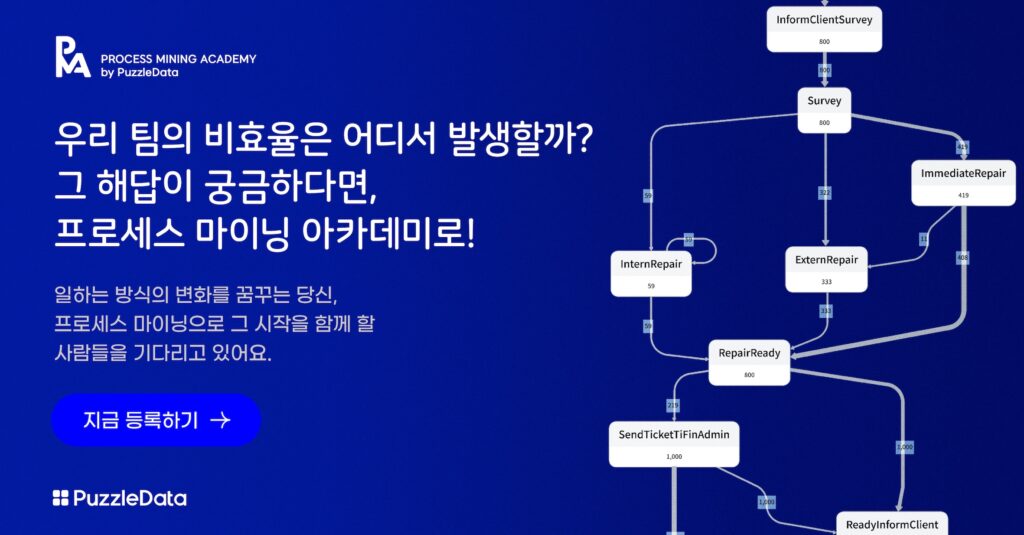What are the Three Key Elements of Process Mining?
Jaehwan Lee | Mar 7, 2023 | 6 min read
Intro
Process mining is an analytical approach focused on extracting insights from event log data to enhance business processes. At the core of process mining lie three essential elements: the case, the activity, and the timestamp. Each of these elements plays a critical role in shaping the analysis framework and outcomes. In this exploration of process mining’s core components, we will examine each element within the context of everyday scenarios.
The Three Pillars of Process Mining
Activity
An activity is an event or step within a sequence of actions and serves as the fundamental building block of a process. These actions can represent various processes, from daily routines such as ‘Waking up,’ ‘Drinking water,’ ‘Brushing teeth,’ and ‘Eating breakfast’ to business operations like ‘Order processing,’ ‘Invoice generation,’ and ‘Payment receipt.’ Each activity encapsulates a specific event that occurs within a broader process.
Timestamp
A timestamp represents the time at which each activity occurred. Timestamps are necessary to arrange activities in chronological order and calculate the durations of each activity. In process mining, two types of timestamps are commonly used:


One timestamp: One timestamp signifies either the start or end of an activity. For example, when tracking the activity, ‘Waking up,’ the timestamp might denote the moment one rises from bed. This approach aggregates the time spent executing the activity (or work time) and the waiting time before the subsequent activity into what’s called the event time. As a result, it becomes difficult to determine the precise duration of the activity.

Two timestamps: Some systems capture both the start and end of an activity, leaving two timestamps. In the case of ‘Waking up,’ the start timestamp could mark the time one begins to stir, and the end timestamp could mark the moment one steps out of bed. Two timestamps allow you to see the work time of the activity as well as the waiting time before the subsequent activity.
The choice between one timestamp and two timestamps is largely driven by your analytical objectives and how your data is recorded.
Case
A case represents a unique instance of a process, and its definition depends on the objectives and scope of your process mining analysis. Start by determining which business process you want to analyze, such as ‘order-to-cash’ or ‘customer onboarding.’ Next, identify which subject you want to track, whether it’s a ‘department,’ ‘customer,’ ‘product line,’ or another relevant category.
Returning to the daily routine example, let’s say you are interested in the daily routines within your household. In this scenario, you might consider yourself as a case. However, in the event of living alone, there is no comparative case to draw insights from, and this lack of diversity in cases can limit the depth of analysis. Therefore, if all your data revolves around a single subject, defining a valid case becomes a bit tricky.
An event log in such a scenario might look like this:

To address this, you can combine the case and timestamp to create distinct cases like “Myself_2023-03-02,” “Myself_2023-03-03,” effectively treating each day as a unique case.

ProDiscovery includes a feature for transforming specific data elements, enabling you to create various cases for analysis.
Now, consider a different scenario involving multiple individuals in a household, such as a family. Each family member may perform an action, skip a certain action, or repeat an action like ‘Drinking water.’ In this scenario, you could treat each family member as a case:

This approach allows you to analyze the actions of each family member and understand their behavioral patterns to derive insights within the context of household management.
Conclusion
Process mining goes beyond data analysis; it’s about seeing data from a process perspective, connecting the dots between the “Who,” “What,” and “When.” Our exploration of its core elements – case, activity, and timestamp – has highlighted their importance in making process mining effective.
Understanding these three elements not only bolsters the process mining execution but also informs data collection methods. By identifying core activities, effective placement of timestamps, and relevant cases, organizations can optimize their data collection strategies to ensure that the data is well-prepared for process mining.
Reference
Rozinat, R.S. Mans, M. Song, W.M.P. van der Aalst, Discovering simulation models, Information Systems, Volume 34, Issue 3, 2009, Pages 305-327, ISSN 0306-4379, https://doi.org/10.1016/j.is.2008.09.002.
#퍼즐데이터 #프로디스커버리 #프로세스마이닝 #PuzzleData #ProDiscovery #processmining #프로세스인텔리전스 #ProcessIntelligence #RPA #BPM #BI #datamining #디지털트랜스포메이션 #디지털혁신 #프로세스혁신 #digitaltransformation #Webinar #업무혁신 #TaskMining #태스크마이닝 #고객여정 #프로세스분석 #데이터분석 #프로세스개선

